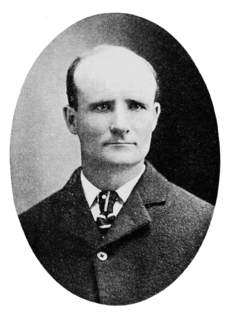
John Bell Hatcher was an American paleontologist and fossil hunter known as the "king of collectors" and best known for discovering Torosaurus and Triceratops, two genera of dinosaurs described by Othniel Charles Marsh. He was part of a new, professional middle class in American science, having financed his education with his labor while also being more educated than older fossil collectors. As such, he faced unique challenges throughout his long and productive career.

Charles Doolittle Walcott was an American paleontologist, administrator of the Smithsonian Institution from 1907 to 1927, and geologist. He is famous for his discovery in 1909 of well-preserved fossils, including some of the oldest soft-part imprints, in the Burgess Shale of British Columbia, Canada.

William Healey Dall was an American naturalist, a prominent malacologist, and one of the earliest scientific explorers of interior Alaska. He described many mollusks of the Pacific Northwest of America, and was for many years America's preeminent authority on living and fossil mollusks.

Edward Hitchcock was an American geologist and the third President of Amherst College (1845–1854).

Oswald Heer, Swiss geologist and naturalist, was born at Niederuzwil in Canton of St. Gallen and died in Lausanne.
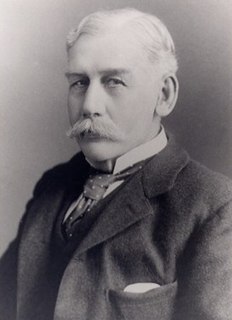
Richard Lydekker was an English naturalist, geologist and writer of numerous books on natural history.

Frank Alexander Wetmore was an American ornithologist and avian paleontologist. He was the sixth Secretary of the Smithsonian Institution.
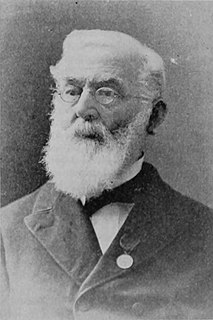
James Hall Jr. was an American geologist and paleontologist. He was a noted authority on stratigraphy and had an influential role in the development of paleontology in the United States.
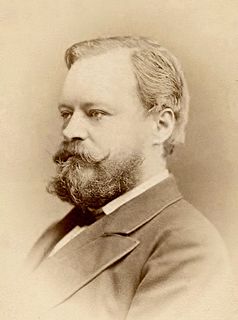
Harry Govier Seeley was a British paleontologist.

Darashaw Nosherwan Wadia FRS was a pioneering geologist in India and among the first Indian scientists to work in the Geological Survey of India. He is remembered for his work on the stratigraphy of the Himalayas. He helped establish geological studies and investigations in India, specifically at the Institute of Himalayan Geology, which was renamed in 1976 after him as the Wadia Institute of Himalayan Geology. His textbook on the Geology of India, first published in 1919, continues to be in use.

Sir Albert Charles Seward FRS was a British botanist and geologist.

Thomas Oldham was an Anglo-Irish geologist.
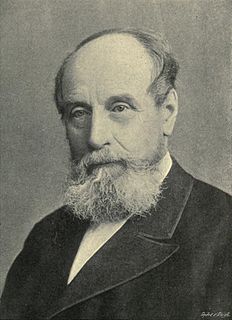
Sir John William Dawson (1820–1899) was a Canadian geologist and university administrator.
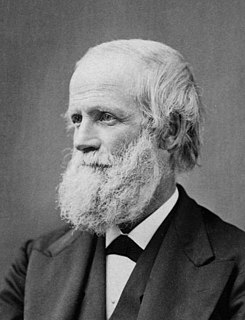
Benjamin Franklin Mudge was an American lawyer, geologist and teacher. Briefly the mayor of Lynn, Massachusetts, he later moved to Kansas where he was appointed the first State Geologist. He led the first geological survey of the state in 1864, and published the first book on the geology of Kansas. He lectured extensively, and was department chair at the Kansas State Agricultural College.
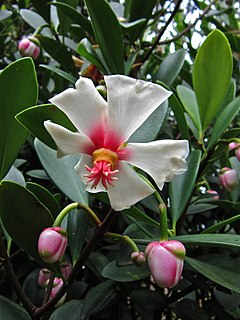
Paul Carpenter Standley was an American botanist known for his work on neotropical plants.

Paleontology in Vermont comprises paleontological research occurring within or conducted by people from the U.S. state of Vermont. Fossils are generally uncommon in Vermont. Nevertheless, however, significant finds have been made in the state. Very few fossils are known in Vermont east of the Green Mountains due to the type of rock underlying that area. During the early part of the Paleozoic era, Vermont was covered by a warm, shallow sea that would end up being home to creatures like brachiopods, corals, crinoids, ostracoderms, and trilobites. There are no rocks in the state from the Carboniferous, Permian, Triassic, or Jurassic periods. The few Cretaceous rocks present contain no fossils. The Paleogene and Neogene periods are also absent from the local rock record. During the Ice Age, glaciers scoured the state. At times the state was inundated by seawater, allowing marine mammals to venture in. After the seawater drained away the state was home to mastodons. Local fossils had already attracted scientific attention by the mid-19th century when mastodon remains were found in Rutland County. In 1950 a major Paleozoic invertebrate find occurred. The Pleistocene Beluga whale Delphinapterus leucas is the Vermont state fossil.
Bernard Renault was a French paleobotanist. He was a specialist in regard to the anatomy of Carboniferous and Permo-Carboniferous period flora.
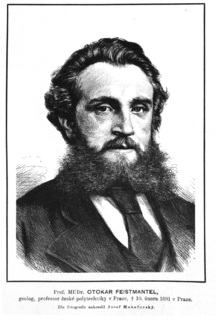
Otokar Eduard Franz Karel Feistmantel was a Czech-Austrian geologist and paleontologist who studied in Prague and Berlin and worked with the Geological Survey of India in India where he replaced Ferdinand Stoliczka who died of altitude sickness on an expedition in 1874. Feistmantel described several genera and species of fossil plants from peninsular India and his work on the "Gondwana Series" contributed to the development of the idea of the ancient supercontinent of Gondwanaland.

Luke Knowlton was a political leader of colonial Vermont, the Vermont Republic, and the state of Vermont. He served as a justice of the Vermont Supreme Court, a member of the Governor's Council, and a member of the Vermont House of Representatives.
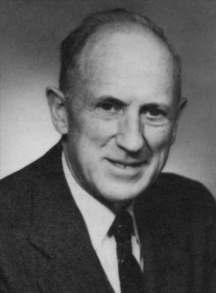
Ralph Works Chaney was an American paleobotanist. The standard author abbreviation R.W.Chaney is used to indicate this person as the author when citing a botanical name.



















